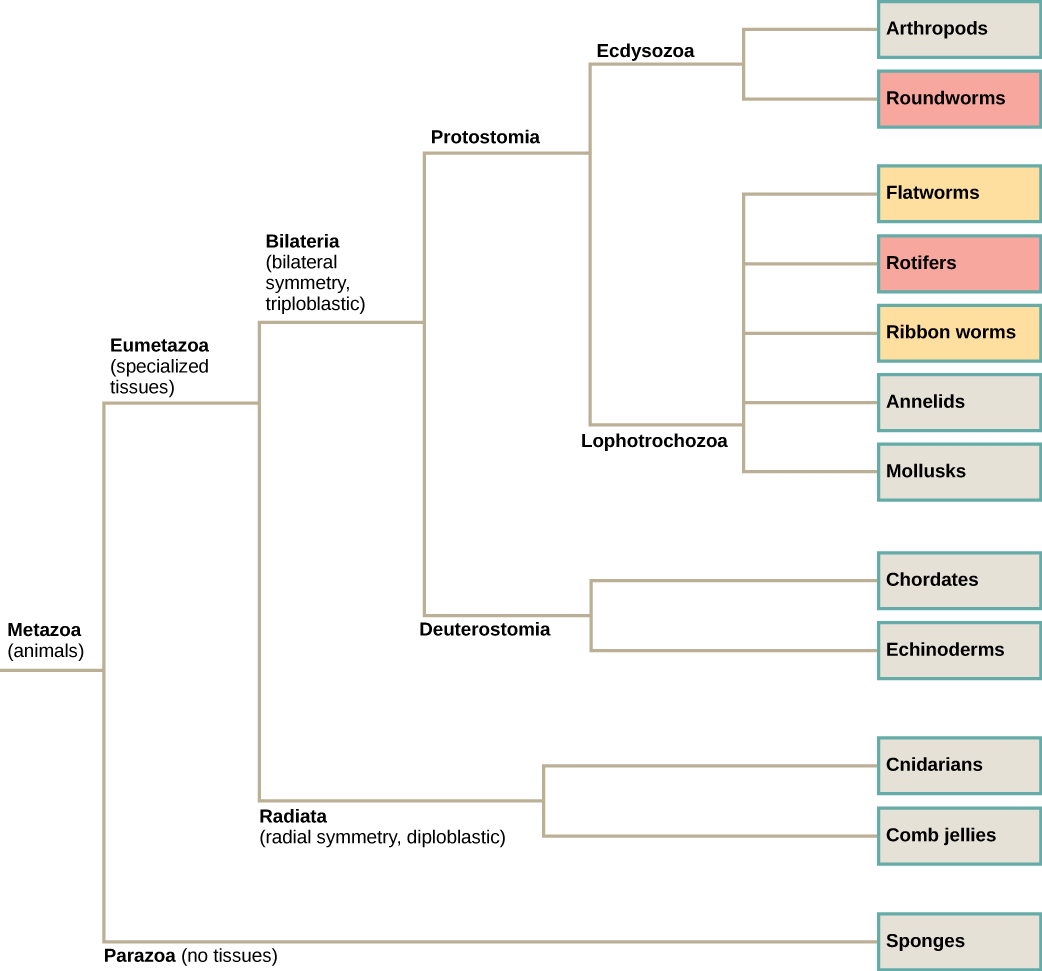| << Chapter < Page | Chapter >> Page > |
Almost all animal species are capable of reproducing sexually; for many, this is the only mode of reproduction possible. This distinguishes animals from fungi, protists, and bacteria, where asexual reproduction is common or exclusive. During sexual reproduction, the male and female gametes of a species combine in a process called fertilization. Typically, the small, motile male sperm travels to the much larger, sessile female egg. Sperm form is diverse and includes cells with flagella or amoeboid cells to facilitate motility. Fertilization and fusion of the gamete nuclei produce a zygote. Fertilization may be internal, especially in land animals, or external, as is common in many aquatic species.
After fertilization, a developmental sequence ensues as cells divide and differentiate. Many of the events in development are shared in groups of related animal species, and these events are one of the main ways scientists classify high-level groups of animals. During development, animal cells specialize and form tissues, determining their future morphology and physiology. In many animals, such as mammals, the young resemble the adult. Other animals, such as some insects and amphibians, undergo complete metamorphosis in which individuals enter one or more larval stages. For these animals, the young and the adult have different diets and sometimes habitats. In other species, a process of incomplete metamorphosis occurs in which the young somewhat resemble the adults and go through a series of stages separated by molts (shedding of the skin) until they reach the final adult form.
Asexual reproduction, unlike sexual reproduction, produces offspring genetically identical to each other and to the parent. A number of animal species—especially those without backbones, but even some fish, amphibians, and reptiles—are capable of asexual reproduction. Asexual reproduction, except for occasional identical twinning, is absent in birds and mammals. The most common forms of asexual reproduction for stationary aquatic animals include budding and fragmentation, in which part of a parent individual can separate and grow into a new individual. In contrast, a form of asexual reproduction found in certain invertebrates and rare vertebrates is called parthenogenesis (or “virgin beginning”), in which unfertilized eggs develop into new offspring.
Animals are classified according to morphological and developmental characteristics, such as a body plan. With the exception of sponges, the animal body plan is symmetrical. This means that their distribution of body parts is balanced along an axis. Additional characteristics that contribute to animal classification include the number of tissue layers formed during development, the presence or absence of an internal body cavity, and other features of embryological development.

Which of the following statements is false?

Notification Switch
Would you like to follow the 'Concepts of biology' conversation and receive update notifications?